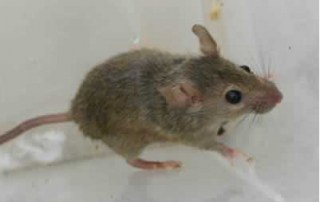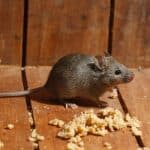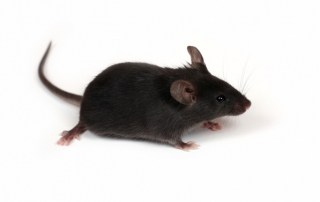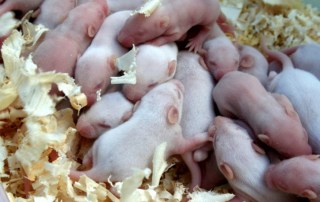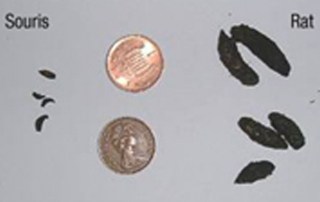The mouse is distinguished by its small eyes and small legs.It weighs between 30g and 45g (1 ½ oz).Its body measures from 6 cm to 9 cm (4 »).Its tail is almost the same length as its body, and often longer.The mouse has large ears in proportion to its size.The color of its hair tends to gray.Unlike the young rat, the mouse has a rather pointed snout, smaller legs and well developed ears.
Latin Name: Sorex
Description :
The mouse is distinguished by its small eyes and small legs.
It weighs between 30g and 45g (1 ½ oz)
His body measures from 6 cm to 9 cm (4 »).
His tail is almost the same length as his body, and often longer.
The mouse has large ears in proportion to its size.
The color of its hair tends toward gray.
In contrast to the young rat, the mouse has a rather pointed snout, smaller legs, and well-developed ears.
The lifespan of the mouse is usually less than one year.
Other small rodents that may be confused with them are native species (native to our regions) that are usually seen in the wild.
For example, damage seen at the bottom of young trees is usually caused by voles, which are mistakenly referred to as « field mice ».
Reproduction:
In a single year, the mouse may have 5 to 10 litters consisting of about 6 pups.
The gestation period lasts nineteen days
The pups are born hairless and with closed eyes; they mature between the sixth and tenth week.
Mating can occur throughout the year, but is most common in the spring as well as late summer.
Habits:
The house mouse may dig into the ground and nest there if it has no access to other shelter. Its nest resembles a ball 10 to 15 cm in diameter made of thin shreds of paper or canvas.
The common mouse is less dependent on water sources than the rat.
Also, it consumes smaller amounts of food and instead nibbles here and there (3 g per day).
It loves seeds and grain, but sometimes prefers them to foods high in sugar, protein or fat such as bacon, chocolate or butter.
It also eats vegetables, fruits, mushrooms, roots, meat and insects.
The mouse does not distinguish colors, but it has an excellent sense of smell, taste and touch.
It is a mostly nocturnal animal.
Its daily activities take place within a radius of 3 to 9 meters.
It can climb and jump more than 30 cm.
Mice infest stored food and pet food. They can chew through structures as well as electrical wiring and damage wall insulation materials.
When searching for nesting materials, they may shred clothing and documents.
The common mouse nests in a box, closet, attic, basement or garage.
If more mice are seen around the house, suspect a problem inside, as they tend to occupy inaccessible areas such as the inside of walls and the underside of floors.
The common mouse, however, is said to be found more often in homes and businesses than rats.
It also infests museums and garages.
This mouse can also live, if there is accessible food, on farms or in fields where it will dig its burrow in the ground or set up its nest under stones.
The hole that gives access to its burrow measures 2.5 cm in diameter.
Prevention:
As a sign of infestation, you can hear the sounds she makes or see her droppings on the floor, in cabinets or closets, with one or sometimes both ends pointed (0.6 cm long or less).
She produces 40 to 100 per day.
You can also see the tracks left by its legs (1 to 1.9 cm) or by its tail (2 mm wide), the greasy traces its coat leaves when it passes, the damage it causes when it gnaws (marks 1 to 2 mm wide) or the entrance holes (4 cm in diameter or less).
It is also possible to smell its particular odor due to the fact that it deposits hundreds of droplets of urine along its path.
It is also possible to see it at night with the help of a flashlight.
To prevent their proliferation, put food in sturdy containers, sweep frequently and practice good waste management to reduce food sources for mice.
It’s also best not to leave boxes or other debris lying around that could be used as shelter by mice.
These measures alone will not solve a mouse problem, but they go a long way toward solving it since there are then fewer alternatives to the toxic baits available to them.
Since mice can enter homes through small openings, it is recommended that an inspection be done on the outside and that openings larger than 0.6 cm (which is not simple) be plugged with resistant materials such as mortar, cement or galvanized metal sheets.
The hole in pipes that enter the house should also be subject to such a measure.
According to some authors, the mouse could manage to pass through a crack the width of a dime, hence the importance of sealing such openings.
It is also recommended to install screens on windows and air vents and metal panels under wooden doors.
If these preventive measures are not followed, nothing will prevent new mice from entering the home.
Mice soak up ten times more food (by urinating, defecating and preening) than they nibble.
They can transmit a virus that causes meningitis (69% of them are infected) as well as tapeworms and carry various pathogens either by biting or by the fleas or mites they carry.
As mentioned above, to control the mouse population, mice must be fed approved poisoned foods and these treatments should be done by pest management specialists to ensure coverage and validity of the treatment.
We also treat all other pest problems (wasps, rodents, carpenter ants, cockroaches, bed bugs, white worms etc.)
To learn more about these pests, visit our Encyclopedia of Parasites.

